
- Index
- Accents
- Beaded (11)
- Buckle (16)
- Button (11)
- Button, Zipper (6)
- Distressed Look (10)
- Embroidered (32)
- Eyelet (4)
- Fur Trim (4)
- Green Spark (3)
- Logo (38)
- Logo, Zipper (9)
- Paches (3)
- Patches (10)
- Quilted, Zipper (2)
- Ribbed Trim (7)
- Shearling Collar (3)
- Shearling Lined (3)
- Undefined (5)
- Zip (2)
- Zipper (30)
- Other (4640)
- Brand
- Air Force (11)
- Alpha Industries (9)
- Army (18)
- Avirex (140)
- Bulova (9)
- Buzz Rickson's (11)
- Camillus (16)
- Elgin (26)
- Excelled (8)
- Graflex (13)
- Hamilton (18)
- Imperial (10)
- Jordan (34)
- Nike (174)
- Polo Ralph Lauren (40)
- Swiss Army (41)
- Us Army (39)
- Victorinox (35)
- Waltham (10)
- Willis & Geiger (13)
- Other (4174)
- Conflict
- Pattern
- Size
- Theme
Stuttgart Army Airfield Established October 1942 by U. S. Air Forces Un-posted

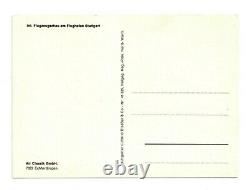
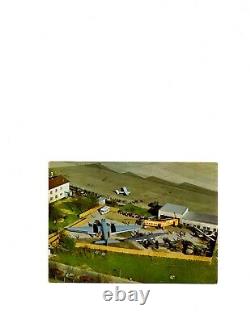
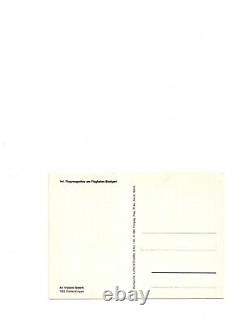

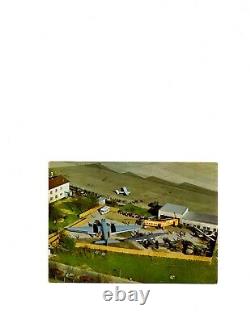
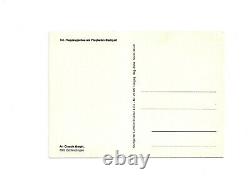
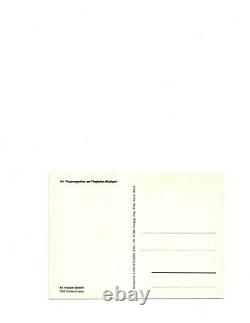


SKU: A3-(0001) Have A Question? We are more than happy to help. Stuttgart Army Airfield Established October 1942 by U. Highlights : In October 1942, the Stuttgart Army Airfield was established north of Stuttgart by the United States Army Air Forces. For this purpose, two runways and facilities for a total of 6,000 men were built.
From October 1942 to May 1943, pilots were trained on the Waco CG-4A cargo glider, after which pilots, including Women Airforce Service Pilots, were trained on various single- and multi-engine aircraft. AAFTC was created as a result of the merger of the Army Air Forces Flying Training Command and the Army Air Forces Technical Training Command on 31 July 1943. In December 1944, the site was discontinued and in August 1946 the site was first transferred to the War Assets Administration and finally to the city of Stuttgart in 1949. From 1959 to 1978, races were held annually by the Sports Car Club of America. Today, the airport is used for general aviation, especially during the hunting season.
In addition, the airport is used by the Air Force for pilot training. Bush administration, Air Force Two landed several times in Stuttgart for hunting trips by U. Stuttgart Airport (IATA code: STR, ICAO code: EDDS, until 2000 - Stuttgart-Echterdingen Airport) is the international airport of Stuttgart-Württemberg. It lies mostly in the municipal area of the cities of Leinfelden-Echterdingen and Filderstadt. The first plants on the present site were built in 1936, the current state of expansion was largely realized in the years of 1986 to 2004. Stuttgart Airport is the largest airport in Baden-Württemberg and ranked sixth among the largest airports in Germany in terms of passenger traffic in 2019. The airport now employs around 9,500 people. Flughafen Stuttgart GmbH (FSG) was awarded the ACI Europe Best Airport Award 2014 by the European Association of Airport Operators (ACI) as the "best airport in Europe" in the category of airports between 5 and 10 million passengers.Continental, Chrome, Printed Photo, View Card, Vintage. Size: 4.125 x 5.75. Card has very minimal age related wear. Publisher: Stuttgarter Luftbild ElsäBer & Co.
For sell is an original vintage postcard as shown above. Please view images of the item to determine it's condition. Cards from all eras are popular as they often contain images of cars, stores, and places that people may recognize.
There are popular postcard collecting topics. Don't limit yourself to those topics, just collect anything that interests you. There are postcards for any taste or budget. Many people collect topics related to their profession and/or other hobbies. Glossary of Postcard Collecting Terms. A postcard that advertises a product, service, or event. A card that advertises something, but is not a postcard. Usually refers to a postcard published before 1920. The artist's signature appears on the postcard illustration. A printed glossy-surface postcard that was based on a color photo.Size is approximately 4 X 6 inches. The hobby of postcard collecting. Card back is divided into a message space on the left and an address space on the right, allowed in the U. The card design is printed so it is raised above the surface.
Part of the image is exaggerated by scaling it much larger than the rest of the image. Usually an official World's Fair, but there are also smaller regional fairs called expositions.
Reproductions of postcard views (about 12 to 18) printed on both sides of a long strip of paper that folds up into an attached wrapper. Period during early 1900s before World War I when postcard collecting was very popular.
Greeting cards printed as postcards for birthdays, holidays, friendship, etc. Degree of embossing is greater than average and colors appear to be airbrushed rather than printed realistically. Sometimes they will have a flat paper backing. Usually means multi-layered postcards with parts of the top layer cut out.
When the card is held to the light, the cut-out areas (such as a windows, lights, sun, or moon) appear illuminated. Another type has oiled sections that transmit the light. A set of individual postcards that form a larger picture when placed side by side.Outlines of large-lettered place names are filled with images. Postcards printed on paper with a linen-textured surface.
Early 1930s to early 1950s. Multiple postcards offered for sale as a group. Mid 1970s or later, usually continental size. A card with multiple pictures. Card with multiple picture areas separated by a solid color band printed with a location name.
Postcard made of unusual materials or having an unusual shape. Can mean any card that is not new, but more often means cards from the 1920s or earlier. Length of the card is greater than 6 inches.Card produced before the Private Mailing Card Act of 1898. The term "Private Mailing Card" was printed on the address side of privately produced postal cards between 1898 and 1901.
Modern advertising postcards distributed free on racks. A photographic image printed on photographic paper with a postcard back. Images printed on cardstock by a printing press are not real photos.
A group of cards published on a particular subject and having a similar design. Often, but not always, has the word series on the back. Postcard measuring 3½ X 5½ inches. Substance similar to glitter that was used to decorate postcards.A card that fits into a specific subject category. Same as a view card. Postcard published before 1907 when only the address was allowed on the back of the card. Cards based on realistic images of specific locations.
Usually refers to cards from the 1930s through the 1960s, but could mean any card at least twenty-five years old. Postcard types and eras - Postcards are frequently classified by the era in which they were produced. The following descriptions of five eras refer to cards made in, or especially for, the United States market. There are also some earlier and less common "pioneer" era postcards.
Early Twentieth Century - The Golden Age of postcards lasted from the beginning of the century until about 1914. Before World War I, most of the better quality cards were printed in Europe. Postcards were very popular as collectibles, and many were saved. Printing was usually high quality, though many of the comics are cheap looking. Greeting cards are colorful and usually embossed.
View cards usually have good detail, deep colors, and no border. Most view cards are based on black-and-white photos with color added.
Real photo cards printed on photo paper were made in limited quantities on a wide variety of local subjects. Studio portraits and family snapshots were also often printed as postcards.
White Border - White border postcards were produced mainly from about 1914 to 1932. View cards usually have white borders and paler colors than earlier postcards.
The printing is usually not as good as that on earlier cards. Paper stock is usually coated and has a flat non-glossy surface. Most of the cards from this era are views.
Greeting postcards were less common and usually were not embossed. Note: Some newer postcards have white borders, but they are not considered "white border" postcards.Linen - From 1933 until the early 1950s most U. Views and comics were printed on card stock with a linen texture. Advertising, large-letter, expositions, and comics from this era are usually colorful and attractive. In my opinion, the view cards from this era are less attractive than earlier or later cards. Real photos of tourist areas were also fairly common in this era.
The real photos cards from this era are generally glossier and more contrasty than earlier ones and have titles in white letters near the bottom of the picture. Standard/Chrome - Chrome cards have a glossy surface and are based on color photos.This type of postcard was produced as early as 1939, but was not common until the mid-1950s. Until the mid-1970s most U. Cards were the "standard" size, approximately 3-1/2 X 5-1/2 inches. Continental/Modern - "Continental" size is approximately 4 X 6 inches. This size was common in Europe earlier than in the U.
Since the mid-1970s are this size. View cards are relatively fewer and more generic than in earlier eras. A large variety of subjects have been produced on modern cards aimed at collectors. These include both individual cards and many books of removable postcards. Holiday greeting postcards are available but not very common. They were more common in the 1980s than they are now. Super-sized postcards approximately 5" X 7" have been appearing more recently. Please let us know how we can make yours a five-star rated one too! Our goal is to make every customer 100% satisfied with their order. If you are not satisfied, please let us know before leaving any feedback. You may return items only in the original condition within 30 days. This item is in the category "Collectibles\Postcards & Supplies\Postcards\Topographical Postcards".The seller is "tiptopthriftytrades" and is located in this country: US. This item can be shipped to United States, Canada, United Kingdom, Denmark, Romania, Slovakia, Bulgaria, Czech Republic, Finland, Hungary, Latvia, Lithuania, Malta, Estonia, Australia, Greece, Portugal, Cyprus, Slovenia, Japan, China, Sweden, Korea, South, Indonesia, Taiwan, South Africa, Thailand, Belgium, France, Hong Kong, Ireland, Netherlands, Poland, Spain, Italy, Germany, Austria, Bahamas, Israel, Mexico, New Zealand, Philippines, Singapore, Switzerland, Norway, Saudi Arabia, United Arab Emirates, Qatar, Kuwait, Bahrain, Croatia, Republic of, Malaysia, Chile, Colombia, Costa Rica, Dominican Republic, Panama, Trinidad and Tobago, Guatemala, El Salvador, Honduras, Jamaica, Antigua and Barbuda, Aruba, Belize, Dominica, Grenada, Saint Kitts-Nevis, Saint Lucia, Montserrat, Turks and Caicos Islands, Barbados, Bangladesh, Bermuda, Brunei Darussalam, Bolivia, Egypt, French Guiana, Guernsey, Gibraltar, Guadeloupe, Iceland, Jersey, Jordan, Cambodia, Cayman Islands, Liechtenstein, Sri Lanka, Luxembourg, Monaco, Macau, Martinique, Maldives, Nicaragua, Oman, Pakistan, Paraguay, Reunion, Uruguay.
- Size: 4.125 x 5.75
- Country/Region of Manufacture: Germany
- Custom Bundle: No
- Continent: Europe
- Material: Paper
- Theme: Post
- Region: Germany
- Country: Germany
- Type: Printed (Lithograph)
- Features: Historic Culture
- Year Manufactured: 1942
- Subject: Army
- Number of Items in Set: 1
- Signed: No
- Postage Condition: Unposted
- Modified Item: No
- Original/Licensed Reprint: Licensed Reprint
- Occasion: History
- City: Stuttgart
- Time Period Manufactured: 1940-1949
- Unit of Sale: Single Unit
- Era: Chrome (c. 1939-present)
- Brand/Publisher: Stuttgarter Luftbild ElsäBer & Co.

